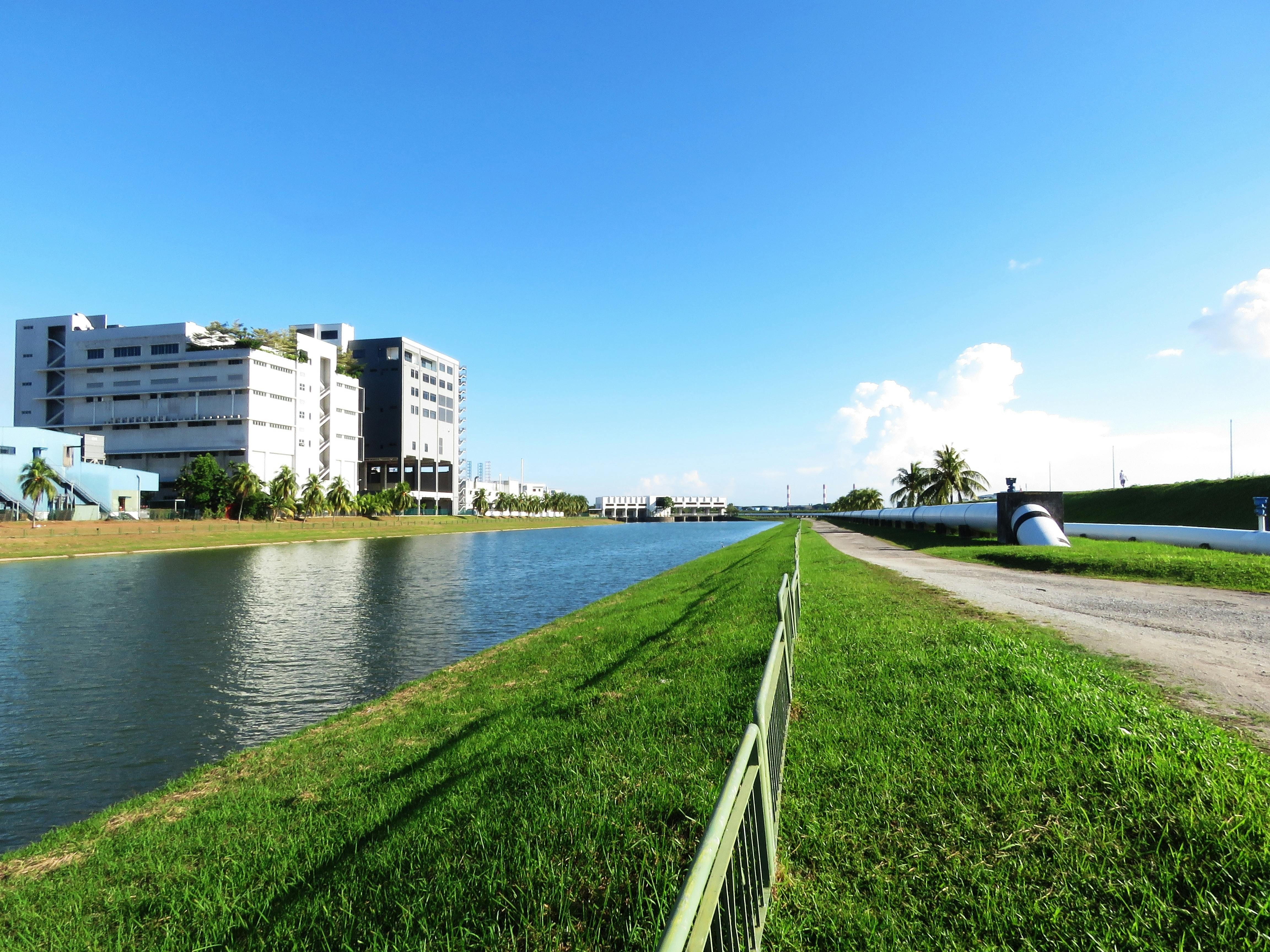Tracing water pipes underground can be a tricky task, but with the right tools and knowledge, it can be done quickly and safely. This guide will show you the steps needed to accurately trace water pipes underground, from locating them to identifying their size and material. With these tips, you’ll be able to confidently identify any water pipe that lies beneath the surface.Identifying underground water pipes can be done in a few ways. One way is to use a metal detector, which will be able to detect the metal of the pipe. Another way is to use ground-penetrating radar to map out the underground area and locate any pipes that may be present. Lastly, if access is available, digging a small hole and visually inspecting the area may also help identify any underground water pipes.
Locating Existing Water Pipes
Finding existing water pipes can be a difficult process, especially if you are dealing with an older home or property. In some cases, the pipes may not be accessible or visible. In this case, it is important to know what kind of tools you need to locate the water pipes in order to avoid costly damages.
The first step when locating existing water pipes is to obtain an up-to-date architectural drawing of your property. This will help you determine where the pipes are located, and can provide valuable information about any changes or renovations that have been made over time. Additionally, it may be beneficial to contact your local utility company for assistance in locating any underground pipes.
If the architectural drawings do not provide enough information, there are other methods that can be used to locate existing water pipes. For instance, using a metal detector or ground penetrating radar (GPR) may help identify any hidden metal piping within the area. Additionally, test holes can be dug in order to visually identify where the water pipes are located and their depth.
Finally, professional geophysical surveys may also be employed in order to locate existing water pipes. Geophysical surveys can use various methods such as electrical conductivity and seismic reflection to detect and map underground infrastructure. These surveys are often used by utility companies when mapping out their underground services and can provide detailed information about where existing pipelines are located and their depth below ground level.
Locating existing water pipes requires a thorough understanding of the local area as well as access to necessary tools and resources. It is important to ensure that all safety precautions are followed when attempting to locate hidden piping so as not to cause any damage or disruption to nearby structures or utilities. With careful planning and proper research, locating existing water pipes should not be a daunting task for anyone involved in construction or renovation projects on older properties.
Planning for Trenching and Digging
Trenching and digging are important components of construction projects, whether you’re replacing a water line or installing a new one. Proper planning is essential to ensure safety and success for your project. To start, you’ll need to know the size and depth of the trench, as well as any potential obstacles that may be in the way. You’ll also need to consider any local regulations or codes that must be followed when trenching or digging. This includes applying for permits if they are required, as well as ensuring that all safety standards are met.
Once you have a plan in place, it’s time to get the right tools for the job. Depending on the size and depth of the trench, you may need a backhoe, excavator, or shovels for digging. Be sure to take into account any underground utilities that may be in the area before you start digging. It’s also important to have the right safety equipment on hand, such as hard hats, gloves, and protective eyewear.
Before you begin trenching or digging, make sure all personnel are properly trained on proper procedures and safety protocols. This includes how to use the equipment safely and how to identify potential hazards in the area. Additionally, it’s important to keep an eye out for any underground utility lines that may be present near your excavation site. If any of these lines are discovered during excavation, contact your local utility company immediately so they can come out and mark them accordingly.
Once everything is in place, put together a timeline of when each step should be completed so everyone knows what tasks need to be done by when. As with any construction project, communication is key throughout every step of planning for trenching and digging projects. Make sure everyone involved is aware of their responsibilities so that everything runs smoothly from start to finish.
Using a Metal Rod
Tracing water pipes underground can be done using a metal rod. To do this, you will need to locate the area where the pipe is buried and then use a metal rod to push through the ground until it hits the pipe. You should then be able to follow the pipe around until you have traced its entire route. This method can be used for pipes that are not too deep in the ground, but it may take some time and effort to complete.
Using a Camera
Another way to trace water pipes underground is by using a camera. A camera can be used to scan through the ground and detect any pipes that may be hidden beneath the surface. This method is particularly useful for finding pipes that are buried deeper in the ground or in areas where it would otherwise be difficult to access. The camera can also provide images of the layout of any existing pipes so that you can accurately trace them.
Using Ground Penetrating Radar
Ground penetrating radar (GPR) is another way to trace water pipes underground. GPR works by sending out electromagnetic waves which bounce off underground objects and then return back to a receiver. By analyzing these signals, GPR can detect any objects that are hidden beneath the surface of the ground. This method is particularly useful for finding pipes which are buried deep in the ground or which may not be visible from above.
Listening for Water Flow
Listening for water flow is another way to trace water pipes underground. By listening carefully, you may be able to hear where water is flowing along a pipe beneath the surface of the soil. This method isn’t always reliable, but it can help you locate certain types of pipes which may not otherwise be visible or detectable by other methods.
Using X-ray Imaging
X-ray imaging is another way of tracing water pipes underground. X-ray imaging works by sending out X-rays which penetrate through materials such as soil and rock, allowing them to form an image of what lies beneath them. This method is particularly useful for locating old or corroded pipes which may otherwise go undetected by other methods.
Utilizing Ground Penetrating Radar (GPR)
Ground penetrating radar (GPR) is a geophysical method that uses radar pulses to image the subsurface. This non-destructive method has been used in a variety of applications, ranging from archeology and civil engineering to environmental protection and defense. GPR can provide a high resolution image of the subsurface, allowing researchers to map features such as buried pipes, voids, and contaminated soil.
GPR is an ideal way to locate underground utilities quickly and safely. By emitting a pulse of electromagnetic energy into the ground, GPR can detect objects like pipes that are not visible on the surface. The radar signal reflects off the object and is then received by an antenna, providing a detailed image of the underground structure. GPR can also be used to map out subsurface geology such as soil layering or bedrock structures.
GPR is also useful for detecting anomalies in soils. It can detect changes in soil composition due to contamination or erosion, as well as voids created by sinkholes or underground tunnels. By analyzing the changes in radar signals over time, researchers can identify areas that require further investigation and remediation.
In addition to locating objects and anomalies beneath the surface, GPR can be used for other purposes such as measuring snow depth or identifying water table depths. Its versatility makes it a valuable tool for researchers in many different fields. With its ability to provide detailed subsurface information quickly and safely, GPR is an invaluable tool for researchers looking to gain insight into the earth’s subsurface structure.

Using Electronic Locator Equipment
The use of electronic locator equipment is becoming increasingly popular in a variety of industries. This technology can be used to help locate and identify objects or persons in a variety of settings, from airports to shopping malls. With the use of electronic locator equipment, it is possible to quickly and accurately locate individuals or objects in an area, increasing safety and efficiency.
The most common type of electronic locator equipment is GPS-based tracking systems. These systems are typically used by police officers or other emergency personnel to quickly locate individuals or objects in an area. By providing a map with GPS coordinates, they can pinpoint exactly where a person or object is located. Additionally, some GPS-based tracking systems are capable of providing additional information such as speed and direction information.
Another type of electronic locator system is RFID technology, which stands for Radio Frequency Identification. This type of system uses radio waves to transmit data from one place to another, allowing the user to identify objects or persons within range. RFID technology has many applications, including security systems, access control systems, and asset tracking systems.
Finally, there are also motion-triggered sensors that can be used as part of electronic locator equipment. These sensors detect movement in an area and then transmit a signal that can be used to determine the location of an object or person within range. Motion-triggered sensors are often used in security applications such as motion detectors for home security systems as well as commercial buildings and factories.
Overall, the use of electronic locator equipment is becoming increasingly important in a variety of different industries due to its accuracy and efficiency. By using GPS-based tracking systems, RFID technology, and motion-triggered sensors, it is possible to quickly locate individuals or objects in an area with minimal effort. Additionally, these types of systems can provide additional information that can be extremely useful when trying to identify potential threats or locate missing persons or objects.
Employing Magnetic Fields Detectors
Magnetic fields detectors are an essential tool in the field of science. They are used to measure and detect the presence of magnetic fields in order to gain information about the environment, objects, or materials. Magnetic fields detectors come in a variety of forms, including induction coils, fluxgate magnetometers, and SQUID magnetometers. Induction coils are the most common type of detector due to their low cost and ability to detect weak magnetic fields. They consist of two wire loops wound around an iron core and can be used to measure both AC and DC magnetic fields.
Fluxgate magnetometers are more sensitive than induction coils and are capable of detecting very small changes in magnetic field strength. They consist of two coils wound around a ferrite core with an alternating current running through them. The alternating current creates a secondary magnetic field which interacts with any external magnetic field present, causing a voltage difference that can be measured by the detector.
SQUID magnetometers are the most sensitive type of magnetic field detector available. These detectors use superconducting quantum interference devices (SQUIDs) to measure extremely small changes in magnetic field strength. These devices must be cooled down to extremely low temperatures in order for them to operate properly, but they have excellent resolution and sensitivity.
Magnetic fields detectors are used in many different applications such as geophysical surveying, medical imaging, industrial process control, and robotic navigation systems. By measuring changes in a magnetic field over time, scientists can gain insight into the structure and composition of materials or objects that may not be visible to the naked eye. Magnetic fields detectors can also be used to identify areas where there is potential danger from electromagnetic radiation or other sources of interference that could interfere with electrical circuits or communication systems.
In conclusion, magnetic fields detectors are invaluable tools for scientists who need to quickly obtain data about their environment or materials they are studying. With its range of different types and capabilities, it is easy to see why these devices have become so popular among researchers and engineers alike.
Examining Utility Maps and Records
Utility maps and records are essential for planning, developing and maintaining the infrastructure of a city. They provide valuable information about the location of existing facilities, such as roads, sewers, gas and water lines, as well as the capacity of each facility. By examining utility maps and records, city planners can determine where new facilities should be constructed to meet the needs of the community. Additionally, they can identify any potential problems or safety concerns associated with existing infrastructure. It is important to keep utility maps and records up-to-date in order to ensure that the city’s infrastructure is well maintained and functioning efficiently.
When examining utility maps and records, it is important to note any changes that have taken place since the last time they were updated. This includes changes in population density or development patterns that could affect the way that a particular facility needs to be serviced or maintained. In addition, it is important to look for any potential issues related to access or drainage problems caused by nearby structures or activities. Finally, it is also important to examine the condition of existing pipes or cables in order to determine if they need replacing or repairs.
In order to ensure that utility maps and records are accurate and up-to-date, it is important for municipalities to conduct periodic reviews of their records. This should include an assessment of any changes in population density or development patterns as well as an examination of the condition of existing pipes or cables. Additionally, it is important for municipalities to update their records whenever new facilities are constructed or existing ones are modified or repaired. By keeping utility maps and records up-to-date, cities can ensure that their infrastructure remains safe and efficient over time.

Conclusion
Tracing water pipes underground can be a difficult task, but it is possible with the right tools and knowledge. It is important to remember that underground piping is not always visible and the best way to locate it is to use a tracing device or a sewer camera. Knowing where the water pipes are located can help avoid costly repairs and prevent property damage. With the right equipment, you can easily trace water pipes underground and determine exactly where they are located.
It is essential to ensure that all safety precautions are taken prior to starting any work below ground. In addition, it is important to get in contact with a professional plumbing contractor if you require more assistance. Tracing water pipes underground may seem like an intimidating task but with the right tools and information, you can successfully complete the job.
In summary, tracing water pipes underground requires the use of special technology or devices. Once you have identified where they are located, it is important to take all necessary safety precautions prior to working below ground. Having the right equipment and knowledge will make it much easier for you to trace water pipes underground successfully.

